(Click thumbnail to view entire photograph)
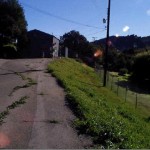 “The Radiation Measurements Facility (Building 4029) was used between 1959 and 1974 for the storage and use of radioactive sources to calibrate radiation detection instruments for the SRE and other reactor tests,” according to the DOE. “In March, 1964, a radium source was dropped in a storage thimble; the plastic secondary encapsulation cracked and a small amount of radium contaminated the inside of the thimble. No contamination escaped and the thimble was re-sealed.
“The Radiation Measurements Facility (Building 4029) was used between 1959 and 1974 for the storage and use of radioactive sources to calibrate radiation detection instruments for the SRE and other reactor tests,” according to the DOE. “In March, 1964, a radium source was dropped in a storage thimble; the plastic secondary encapsulation cracked and a small amount of radium contaminated the inside of the thimble. No contamination escaped and the thimble was re-sealed.
“All of the sources were removed by April, 1974, and the facility has since been used for temporary storage of non-radioactive materials.
“In 1987 a characterization survey confirmed the contamination at Building 4029 was limited to the aforementioned storage thimble. The contaminated thimble was later removed and disposed of in October, 1989 during D&D of the facility. A final survey was performed by Rocketdyne in 1990. The Oak Ridge Institute of Science and Education (ORISE) and the California Department of Health  Services (DHS) then performed verification surveys in 1992 and 1995 respectively, that confirmed that no residual contamination remained. The DHS concurred with release for unrestricted use in 1995. A final decommissioning report was prepared in March 1996. In April 1997 a certification docket was prepared. The DOE released the facility for unrestricted use in 1997 and published the decision in the Federal Register. In January 2000, the EPA performed a document review and validation survey confirming the conclusions of prior surveys.”
Services (DHS) then performed verification surveys in 1992 and 1995 respectively, that confirmed that no residual contamination remained. The DHS concurred with release for unrestricted use in 1995. A final decommissioning report was prepared in March 1996. In April 1997 a certification docket was prepared. The DOE released the facility for unrestricted use in 1997 and published the decision in the Federal Register. In January 2000, the EPA performed a document review and validation survey confirming the conclusions of prior surveys.”
Building 4030 – Van de Graaff Accelerator
“There are other ways to generate artificial radioactivity besides nuclear fission (such as in reactors)” says the Department of Energy. “One way is to bombard a target material with atomic particles which have been accelerated to high speeds by means of a particle accelerator. A common form of particle accelerator is a “van de Graaff accelerator”. It uses a high-voltage electrostatic field to 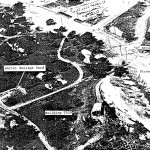 accelerate atomic particles to high speeds (high energy levels). Collisions of these particles with a target material (such as aluminum or tritium) can generate small amounts of radioactivity. A van de Graaff accelerator was operated in Building 4030, between 1960 and 1964, bombarding tritium targets with deuterons to produce neutrons.
accelerate atomic particles to high speeds (high energy levels). Collisions of these particles with a target material (such as aluminum or tritium) can generate small amounts of radioactivity. A van de Graaff accelerator was operated in Building 4030, between 1960 and 1964, bombarding tritium targets with deuterons to produce neutrons.
“In 1966, the accelerator was removed. Beginning in 1972, the building was used as a purchasing office for the site and for traffic and warehousing. Building 4030 was demolished in 1999.
Building Cleanup
“The van de Graaff accelerator was removed from the facility and the building put to other non-radiological uses. In 1988 a characterization survey was performed and found no contamination. In 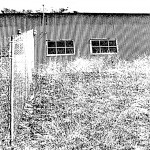 September 1995, the Oak Ridge Institute for Science and Education (ORISE) conducted a verification survey. In 1996 Boeing conducted a final status survey and documented it in April 1997. In the 1997, the facility was subjected to a verification survey by the California Department of Health Services (DHS). In November 1997, a final D&D report and a certification docket were prepared.
September 1995, the Oak Ridge Institute for Science and Education (ORISE) conducted a verification survey. In 1996 Boeing conducted a final status survey and documented it in April 1997. In the 1997, the facility was subjected to a verification survey by the California Department of Health Services (DHS). In November 1997, a final D&D report and a certification docket were prepared.
“The facility was released for unrestricted use by DOE in December 1997 after publication in the Federal Register, and it was released by DHS in January 1999.
“In November 2006, a final status survey of the building footprint was performed showing the land was suitable for release for unrestricted use.
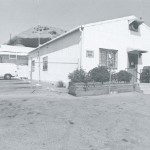
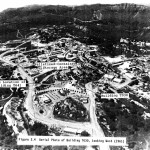

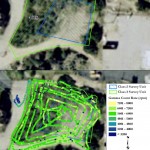
“In February 2008, ORISE performed a verification survey of the building footprint confirming that release limits had been satisfied.
Building 4055 – Nuclear Materials Development Facility
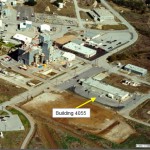 “Building 4055 was constructed in 1967 specifically for development work involving plutonium, and incorporated all of the safety systems and safeguards required for such work,” says the Department of Energy. “From 1968-69, NMDF was used to support the Fast Flux Test Facility through analytical chemistry and research for uranium-plutonium scrap pellet recycling programs. Fission research on microscopic dispersion of tungsten in uranium plutonium fuel was also conducted at that time. For seven months in 1970, the NMDF fabricated mixed uranium-plutonium oxide pellets for irradiation tests.
“Building 4055 was constructed in 1967 specifically for development work involving plutonium, and incorporated all of the safety systems and safeguards required for such work,” says the Department of Energy. “From 1968-69, NMDF was used to support the Fast Flux Test Facility through analytical chemistry and research for uranium-plutonium scrap pellet recycling programs. Fission research on microscopic dispersion of tungsten in uranium plutonium fuel was also conducted at that time. For seven months in 1970, the NMDF fabricated mixed uranium-plutonium oxide pellets for irradiation tests.
“The NMDF was in standby from September 1970 until March 1974. NMDF was activated to participate in the Advanced Fuel Systems Program for liquid metal fast breeder reactors and to demonstrate reduced transuranic (TRU) solid waste with the use of a molten salt combustor. In 1975, the facility was upgraded to address new environmental, safeguard, licensing and radioactive materials facility operating standards.
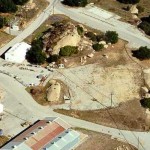
“Two notable achievements that were the result of operations at building 4055 were:
• Development of analysis technologies for uranium-plutonium oxide fuels
• Development of technologies to mix tungsten into uranium-plutonium carbide fuel Building Cleanup
“D&D efforts began in late 1979 beginning with the decontamination of equipment and treatment of the remaining uranium carbide on site. The entire building was stripped to the walls and decontaminated, equipment was disposed of as low-level waste, and the liquid waste and exhaust systems were removed.
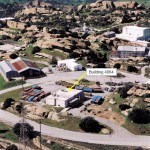
“Following Rocketdyne’s final survey, the Oak Ridge Associated Universities (ORAU), under contract to the Nuclear Regulatory Commission (NRC), performed a verification survey in 1987. Since both surveys confirmed that no residual contamination reamained, the facility was released for unrestricted use and removed from the Special Nuclear Material License on October 7, 1987.
“In October 2001 the EPA performed a document review and validation survey of 4055, confirming the results of the prior surveys.”
Building 4064 – Fuel Storage Facility
“Constructed in 1958, the Fuel Storage Facility (Building 4064) was a vault, built to provide secure storage for non-irradiated fissionable fuel material (enriched uranium and plutonium) which was 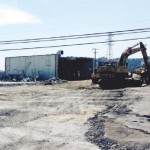 used to make reactor fuel,” according to DOE. “The building was constructed above ground out of concrete and concrete blocks, to meet the Atomic Energy Commission (AEC) criteria for vaults for storage of fissionable material. It was equipped with intrusion alarms. Closed containers of non-fissionable radioactive waste were also stored outside on a concrete pad within the locked, fenced facility perimeter.
used to make reactor fuel,” according to DOE. “The building was constructed above ground out of concrete and concrete blocks, to meet the Atomic Energy Commission (AEC) criteria for vaults for storage of fissionable material. It was equipped with intrusion alarms. Closed containers of non-fissionable radioactive waste were also stored outside on a concrete pad within the locked, fenced facility perimeter.
“After fissionable material was no longer needed and removed from the facility; the secure area was used for storage of miscellaneous equipment and containers of radioactive waste. The building was emptied of all contents (radioactive and non-radioactive) by 1993.
“A characterization survey was performed in 1988. The building was decontaminated and a final survey of the building interior and also the fenced-in yard was performed in 1993. The Oak Ridge Institute of Science and Education (ORISE) and the California Department of Health Services (DHS) 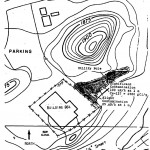 performed verification surveys in 1994.
performed verification surveys in 1994.
“In 1996, the building was released for demolition by the Department of Energy (DOE) and the California DHS. The building was demolished in 1997 and the waste shipped off-site as clean waste.”
Building 4093 – AE-6/L-85 Reactor
“Building 4093 was constructed in 1958 to house the AE-6 Reactor,” says DOE. “The AE-6 Reactor was originally called the Water Boiler Neutron Source (WBNS) reactor. Built in 1952 the WBNS had a maximum power of 0.5 Wt. The WBNS was modified to produce a maximum power of 3 kWt and then was referred to as the AE-6 Reactor.
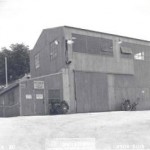
“The NRC licensed the facility in 1972 when ownership was transferred from AEC to Rockwell. The reactor was renamed L-85 and operated until February 1980.”
Building 4100 – Advanced Epithermal Thorium Reactor
“The Advanced Epithermal Thorium Reactor (AETR) was housed in Building 4100,” according to the Department of Energy. “The AETR was used to study twenty different nuclear reactor core configurations by using an apparatus which supported a range of geometries.
“The tests conducted at the AETR measured the results of nuclear criticality which took place when key components were arranged in different ways. The tests conducted under low power conditions 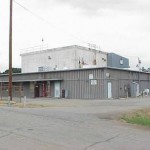 so researchers could easily study the experiments. Despite the word “Reactor” within the facility name, the tests did not produce a sustainable nuclear fission reaction and so the facility is more accurately described as a “critical” facility.
so researchers could easily study the experiments. Despite the word “Reactor” within the facility name, the tests did not produce a sustainable nuclear fission reaction and so the facility is more accurately described as a “critical” facility.
“Early fuels used in the AETR were thorium or uranium; later tests with high-energy (fast) neutrons were conducted and the name was changed to the Fast Critical Experiment Laboratory (FCEL). The program was completed in 1974.”
25 Years of Award-Winning SSFL/Rocketdyne Reporting
1998 – 2023
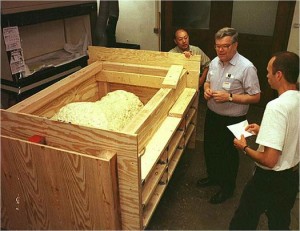












Recent Comments